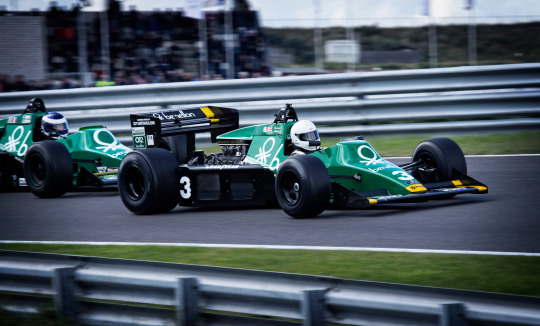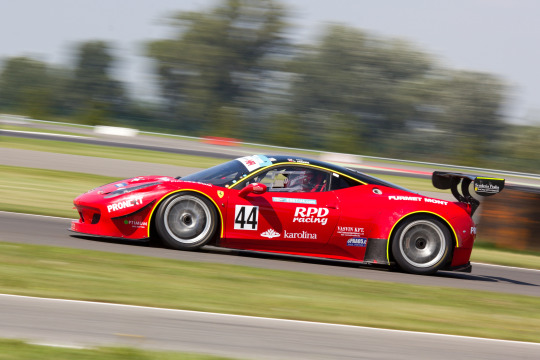Text
Split-second Decision or Pure Luck - Why Racing Is Never Predictable

On television, auto racing sometimes seems straightforward – be in control of your machine and you can just finish the lap. Push a bit more and you can eke out a few tenths of a second and attain faster lap times. But smooth as it may seem, I realized, ever since I got my first laps in an open-wheel single-seater at Laguna Seca near Monterey, California, that it’s never predictable on the racetrack.
My First Experience of a Racing Car
I remember my first acquaintance with a real racing machine. Getting in the cockpit took some time getting used to. Along with three other first-timers, I was asked to take to the track, following the pace car.
The 125bhp power on a chassis weighing just around 470kg took some getting used to, but that went on well. We were just following the pace car and getting to learn the track, though nothing could prepare you for the Corkscrew corner – it’s a roller coaster every time you pass that. A few laps following the instructors’ car and we were back in the garages. I thought to myself -- well, that wasn’t too bad. A wave of confidence swept through me as I pulled myself out of the cockpit and took my helmet off. A theory session followed where the lines we needed to take through the track were explained, with special mention of the Corkscrew.
All on My Own
And then, it was time to head to the track by ourselves! We had to do individual laps before all four of us would go out together. I remembered all the instructions, put on my helmet and gloves, and got into the cockpit, imagining I was a Formula 1 or IndyCar driver. When the engine came to life, I gingerly released the clutch, and was instantly driving through the pit-lane with the wind on my helmet. Phew! My dream finally came true.
As I entered the track I floored the accelerator and the roar of the engine behind just drowned everything else. I slowed down significantly for the first corner, more than I probably needed to. The slamming of the breaks just vaulted my head forward. I was cautious through the Corkscrew as well, but after 2 laps I was in the groove. As I got back to the pits, I could feel my forearms aching. In a race car, the steering seems to want to get out of your hands, so you need to exert all your strength to hold it despite the vibrations.
The Joint Session – Face-to-Face With Danger
After the rest had completed their laps, we had to go out together. The lap times weren’t officially discussed, since they were just getting the hang of it but we did realize that I was second fastest. A few tips again from the trainers, and we were off.
I was third in the cue and we drove through the track in that order, gradually raising the speed. The roar of the engines filled the track as we reached our penultimate lap. Heading through the main straight, I could see the guy ahead of me wobbling. I figured he perhaps just lost momentary control. But the wobbling increased, and as we approached the corner, his right rear tire just blew up! I was just a few meters behind him, rushing towards the corner. With the tire having exploded, the carcass was flying towards my helmet. In a split-second I turned my car to the left, and missed the carcass by inches!
I really don’t know whether I had the capability to think so fast or if it was pure luck that I avoided the tire hurtling towards me. That first experience of a racecar was totally unexpected but it prepared me to face just about anything. I realized early on that nothing is predictable on a racetrack.
Kyle Simak is one of the foremost, upcoming racing drivers participating in various open-wheel as well as closed cockpit cars. He still loves karting and races in go-kart championships now and then.
#kyle terrace simak racing driver#car racing kyle terrace simak#racing car#auto racing#kyle terrace simak indycar driver#Kyle Simak
0 notes
Text
Halo and Aeroscreen for Racecar Driver Protection

Auto racing is always dangerous, and there can be no denying that. Formula 1, though, seemed to be in denial for around 8 years since Elio de Angelis’ fiery crash during testing at Paul Ricard, France in 1986 till Ayrton Senna and Roland Ratzenberger had their fatal crashes during the San Marino Grand Prix weekend at Imola, Italy in April, 1994. That 8-year period was the first time in history where Formula 1 did not encounter a single fatality.
A History of Serious Crashes in Formula 1
For sure, there were serious accidentsfor Nelson Piquet and Gerhard Berger at Imola in 1987 and 1989 respectively while Martin Donnelly had his career ended after a horrific crash at Jerez, Spain in 1990, where his car literally broke in two and he was thrown onto the track unconscious and with multiple fractures to his bones at various parts of the body along with internal injuries.
Imola 1994 was the wake-up call though, that things can never be left to chance. There was too much complacence with regard to safety till then. Just because there weren’t any deaths in that 10-year period, it doesn’t mean that things were safe. Looking at how racing car cockpit designs were back then, it just was a miracle that there weren’t any casualties.
Cockpit Protection improved but left the Head Vulnerable
It wasn’t just the driver’s exposed head - albeit protected by a helmet - that was at risk, but also the chest and upper body. It was in the years following 1994 that cockpit sides were raised to give the driver’s upper body reasonable protection from debris. And then, from 2010, cockpit sides were raised further, to more comprehensively cocoon the driver’s head.
But a significant portion of the head was still exposed, particularly the crucial top part that houses the brain. Crash helmets have evolved to become safer and lighter, but they can never always protect the brain from serious injury or even death. That was made clear in other major championships such as Formula 2 and IndyCar.
Recent Fatalities in Circuit Racing
Henry Surtees lost his life in a Formula 2 crash at Brands Hatch, England in 2009 when a tire from another crashed car landed on his helmet. In IndyCar, Dan Wheldon became a victim of head trauma after colliding with a fence post at the edge of the banked Las Vegas Motor Speedway in 2011. More recently, IndyCar driver Justin Wilson died from head injury after debris from a crash hit his helmet at the Pocono Raceway, Pennsylvania in 2015. That was the next wake-up call for the whole of open-wheel auto racing, particularly Formula 1 that was observing the events in the other series such as IndyCar, Formula 2 and Formula 3.
A Close Call
Of course, back in 2009, Formula 1 too had a close call when Felipe Massa was struck above his left eye with a suspension spring that got detached from the car ahead during qualifying for the Hungarian Grand Prix. The spring penetrated the helmet at the part where the visor joins the helmet structure and hit the left eyebrow causing that eye to shut and remain so till surgery rectified it. In fact, it was feared that Massa would lose sight, but he was miraculously saved.
Fatality Strikes Formula 1 again
20 years after 1994, Formula 1 was struck with its first fatality when Jules Bianchi crashed into a tractor that had arrived to retrieve another crashed car during the caution period of the 2014 Japanese Grand Prix, Suzuka. Bianchi suffered diffuse axonal injury (DAI) caused by sudden deceleration of the head. He died 8 months later, never recovering from the coma. Though Bianchi’s helmet didn’t actually strike anything, the incident only made the call for safer cockpits louder and stronger.
Say Hello to Halo
The need to protect the driver’s head emerged, and eventually research by the FIA, motor racing’s governing body, into various kinds of protective canopies finally resulted in the introduction of the halo, a carbon-fiber frame to be fixed on top of the car’s body, ahead of the open cockpit. Formula 1 implemented this in 2018 followed by other series around the world, including Formula 2, Formula 3, Super Formula and S5000. Soon there were crashes in Formula 1 and Formula 3 that revealed how the halo protected the cockpit and prevented serious head injury.
IndyCar Goes a Different Route
For some strange reason, IndyCar did not adopt the halo as it is, but added a transparent screen around it to protect the driver from even smaller pieces of debris that could penetrate the area between the frame of the halo and car body. This is called an aeroscreen, and will be used from the 2020 IndyCar season.
Now I am all for safety, but I think the aeroscreen is taking it too far. Either leave it as an open cockpit car and add the halo for cockpit safety, or employ a fully closed cockpit with doors and air-conditioning like the sports prototypes and GT cars have. This aeroscreen looks like an odd compromise. The screen has not been proven to protect from just about any debris, and the risks of such small pieces of debris penetrating the cockpit between the frames of the halo is extremely rare anyway.
Why the Aeroscreen Isn’t Ideal
The top part of the helmet that protects the most critical part of the head, the brain, is still exposed by the halo and the aeroscreen. They can only prevent large pieces of debris that come towards the head from ahead. The screen around the halo in an aeroscreen actually does not serve much of a purpose here since the halo structure itself is good enough and placed at a favorable angle tointercept debris that usually are big enough.
Why the Halo Would Have Done the Job
Besides, there are heating issues reported by drivers since the screen blocks the air coming towards the cockpit. Closed race cars have air-conditioning or other helmet cooling devices to prevent the heat, but, with the current design, air-conditioning can’t be added. The problem still isn’t fully resolved despite adding vents below the aeroscreen structure. Drivers are now resorting to helmet cooling devices on special helmets that enable air to be fed directly to the head of the driver through a hose. But are all these complications needed, when a halo would have done the job? I and certainly many fans think so.
About Kyle
Kyle Terrace Simak is an upcoming racing driver looking to make the cut in the various junior series of the SCCA to eventually make it to the top rungs of professional motorsport. He is also a scholar of various aspects of motor racing and likes to give his insight into the different aspects of the sport.
1 note
·
View note